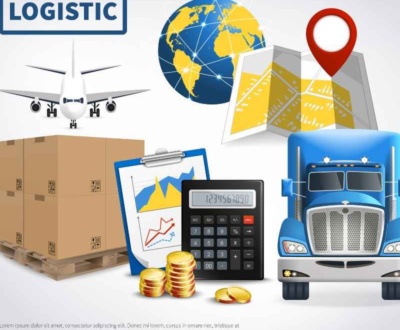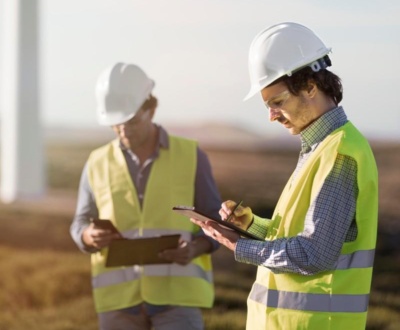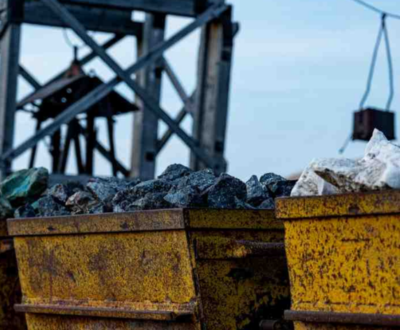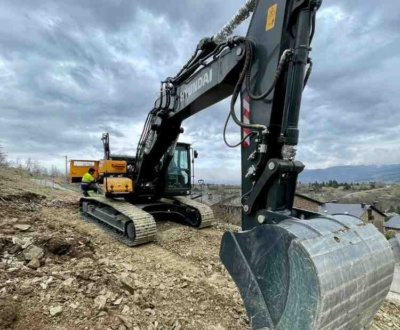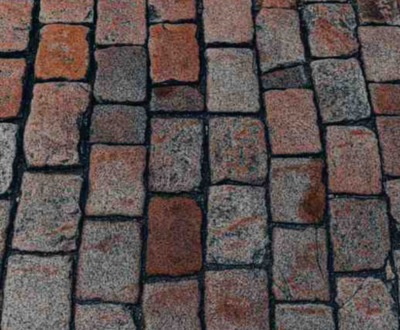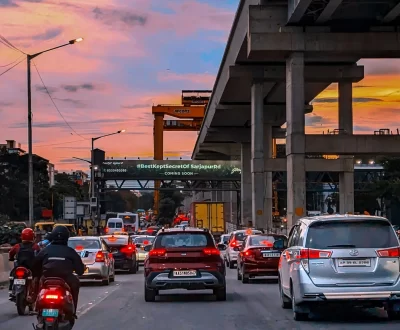How the Expansion of Urban Areas is Changing Road and Bridge Design
- March 27, 2025
- Uncategorized
As cities continue to grow and evolve, the demand for efficient, sustainable, and innovative infrastructure becomes increasingly important. The expansion of urban areas presents both challenges and opportunities for road and bridge design. Construction companies and engineers are now tasked with adapting to the complexities of rapidly developing urban environments while incorporating new technologies, sustainable practices, and smarter design solutions. This article explores how the expansion of urban areas is reshaping road and bridge design and highlights the key trends, challenges, and innovations that are guiding this transformation.
Accommodating Multi-Modal Transportation
As cities become more densely populated, transportation needs have expanded beyond traditional car-centric systems. Road and bridge designs are now being tailored to support a wide range of transportation options, including bicycles, pedestrians, and public transit. Urban planners and engineers are designing multi-modal streets and bridges that not only accommodate cars but also encourage sustainable travel options like cycling and walking. This shift in design reflects the growing emphasis on reducing traffic congestion and promoting eco-friendly transportation alternatives.
For instance, modern urban roads and bridges often feature dedicated bike lanes, wider pedestrian walkways, and even spaces for electric scooters. Public transit lanes, such as bus and tram routes, are increasingly being integrated into road designs to reduce vehicle dependency. These changes are essential for creating more efficient, connected urban areas where all forms of transportation can coexist safely and seamlessly.
Smart Infrastructure: Intelligent Transportation Systems (ITS)
With the advent of technology, the way we design and manage roads and bridges is changing dramatically. One of the most significant innovations is the integration of Intelligent Transportation Systems (ITS), which utilize real-time data, sensors, and automated traffic management systems to improve traffic flow, safety, and the overall driving experience.
In urban settings, smart sensors embedded in bridges and roadways can monitor structural health, detect stress or vibrations, and provide early warnings about potential maintenance needs. This proactive approach to infrastructure management helps extend the life of bridges and roads, ensuring they remain safe and functional for years to come. Additionally, ITS can help manage traffic congestion by adjusting traffic signals in real-time, providing drivers with updated routing information, and improving overall traffic flow.
As urban areas become more congested and transportation patterns evolve, these technologies will play an increasingly vital role in maintaining the efficiency and safety of our infrastructure.
Sustainability and Environmental Considerations
Urban expansion has placed a greater emphasis on sustainability in all aspects of construction, and road and bridge design is no exception. Environmental concerns, including air quality, stormwater management, and energy consumption, are driving the need for greener construction practices.
Modern roadways and bridges are now being designed with sustainability in mind. For example, permeable pavements are being used to reduce runoff and improve stormwater management, which is particularly crucial in flood-prone urban areas. Solar panels are also being integrated into roads and bridges to power streetlights and other infrastructure elements, helping to reduce the carbon footprint of transportation networks.
Additionally, bridges are increasingly being built with recycled materials or materials that have a lower environmental impact. This not only reduces the carbon footprint of construction projects but also contributes to creating a more sustainable and resilient urban infrastructure.
Vertical and Elevated Infrastructure
As cities become more crowded, there is a growing need to maximize space. In response, engineers are turning to vertical and elevated infrastructure to help alleviate congestion and make better use of limited land. Elevated roads, bridges, and public transit systems are becoming common features in many urban areas, helping to keep traffic moving smoothly while preserving valuable land for other uses, such as parks, residential buildings, or commercial spaces.
For example, elevated highways and flyovers are being built to reduce ground-level traffic congestion in heavily populated city centers. Similarly, elevated public transit systems, like monorails or light rail lines, are being implemented to move people efficiently above the crowded streets below. This shift to vertical infrastructure is reshaping the way cities approach urban design, creating more efficient and livable environments.
Integration with Urban Planning and Community Input
Urban expansion is no longer just about building infrastructure in isolation. Road and bridge designs are increasingly being integrated into broader urban planning efforts. Cities are recognizing the importance of creating infrastructure that is not only functional but also enhances the quality of life for their residents. This means considering factors like walkability, aesthetic value, and community needs when designing roads and bridges.
Public input plays a significant role in shaping these designs. Community engagement helps ensure that new infrastructure meets the needs of the people who will be using it. For example, pedestrian-friendly bridges that connect neighborhoods, parks, and recreational areas are becoming more common, as urban planners seek to improve access to public spaces. Similarly, efforts are being made to minimize noise pollution, improve safety, and reduce the environmental impact of new infrastructure.
By incorporating these considerations, modern road and bridge projects are better aligned with the long-term goals of urban development, contributing to the overall livability and sustainability of cities.
Modular and Prefabricated Construction
The speed of urbanization is pushing the construction industry to find faster and more efficient ways to build roads and bridges. One solution that has gained traction is modular and prefabricated construction. This approach involves creating components off-site in controlled environments, which are then assembled on location. This method significantly reduces construction time, minimizes disruptions to local traffic, and lowers overall costs.
For bridges, prefabricated beams, decks, and other structural elements can be produced in factories and then transported to the site for quick assembly. Modular construction allows for scalability, enabling infrastructure to be adapted and expanded as urban areas continue to grow.
At Baba Contractor and Engineer, we are fully aware of the unique challenges posed by the expansion of urban areas. The design and construction of roads and bridges must evolve to keep pace with these changes. By embracing multi-modal transportation solutions, incorporating smart technology, prioritizing sustainability, and employing innovative construction methods, we are helping to shape the infrastructure of tomorrow’s cities. As urban spaces continue to grow, our commitment to excellence in design, engineering, and construction will ensure that the roads and bridges we build today are capable of supporting the dynamic, ever-changing needs of the future.

